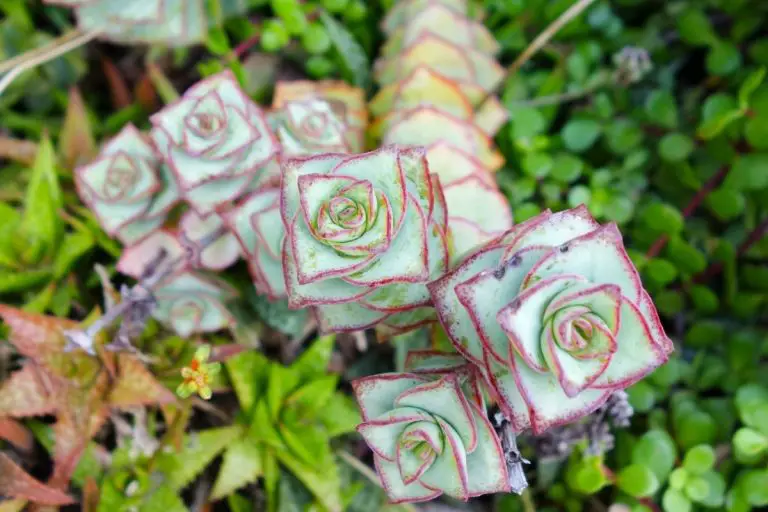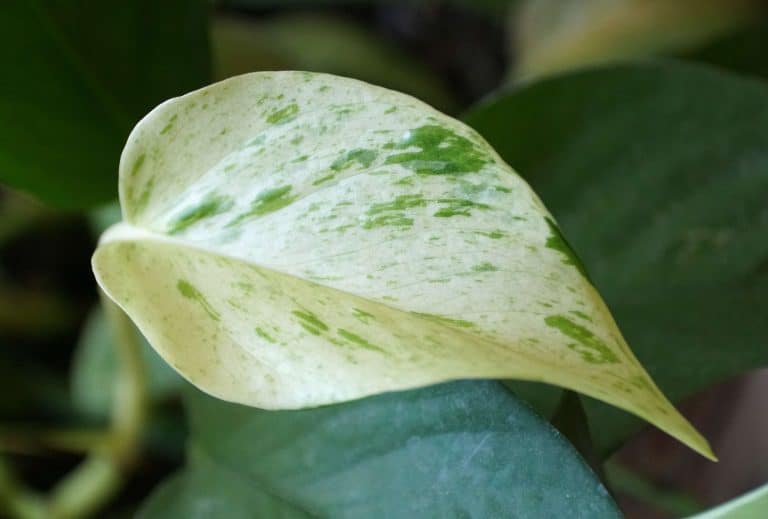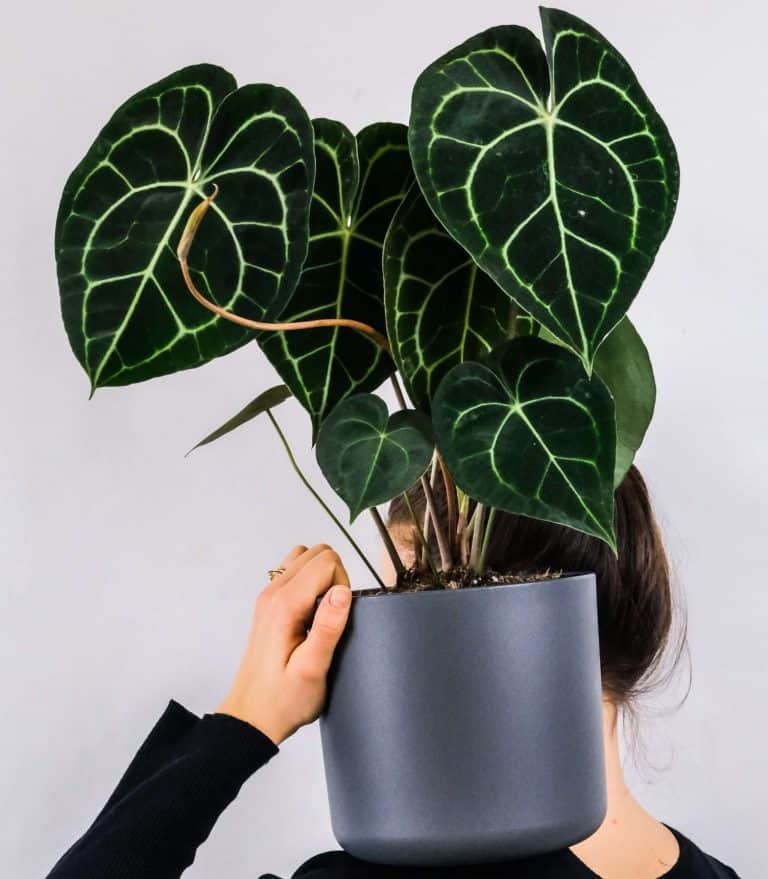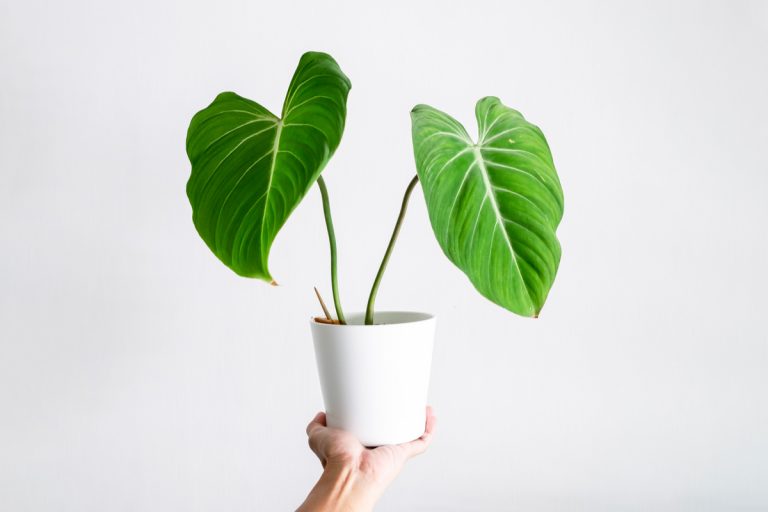Why Is My String Of Pearls Dying: How to Revive It and Ensure It Doesn’t Happen Again
Are you wondering “Why Is My String Of Pearls Dying?”.
The String of Pearls plant is exquisite-looking and may seem low maintenance given its nature as a succulent.
However, String of Pearls plant problems happen more often than you’d imagine, and if you’ve found yourself wondering, why is my string of pearls dying, then you’re in the right place.
The string of Pearls plant care is not as difficult as it seems and even if your plant seems like it is dying, you may still be able to save it.
Read on to find out how to revive a dying succulent plant like the String of Pearls and how you can best care for this plant so you keep it looking plump, healthy, and green.
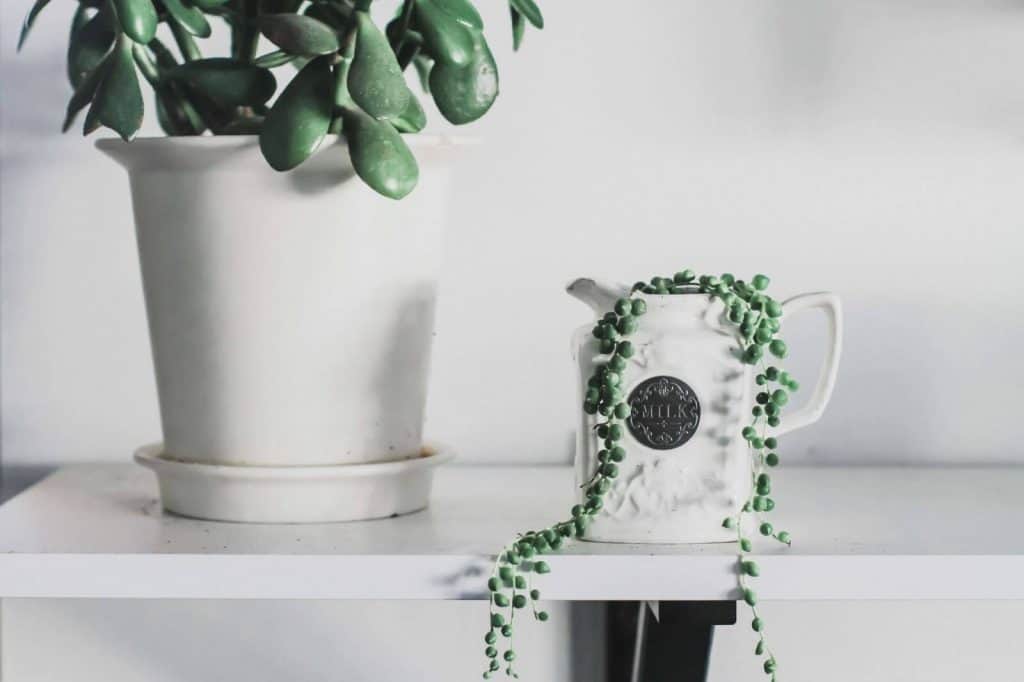
DISCLOSURE
Some of the links on here are affiliate links, and I may earn if you click on them, AT NO EXTRA cost to you. I hope you find the information here useful! Thanks.
Related Articles:
- How to Care for Philodendron Verrucosum: Essential Tips
- Pilea Glauca – The Ultimate Indoor Plant Guide
- Anthurium Clarinervium: The Most Effective Care Guide
- Philodendron Hastatum: The Beginners Care Guide
Place your string of pearls in beautiful indoor hanging baskets to keep them happy and thriving!

What Is a String Of Pearls Plant?
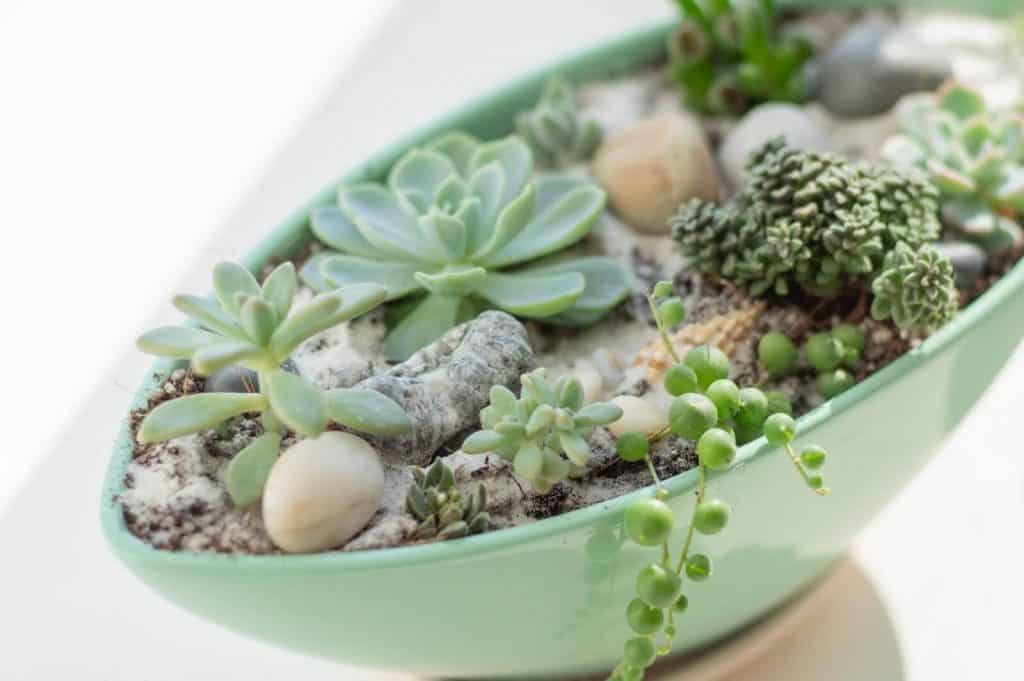
The String of Pearls plant, also known scientifically as Curio Rowleyanus and previously as Senecio Rowleyanus, is best known for resembling a pearl necklace. It is a fast-growing succulent with trailing stems that can grow up to three feet with small, beady leaves that look just like pearls.
The plant which is from the Eastern Cape of South Africa has round leaves that help minimize water loss through evaporation, making them drought-tolerant. They are known for requiring little water and can survive even without being watered for a long period.
Its low maintenance makes it a great starter plant for those starting their gardening journey as it requires minimal care.
However, its thin stems and high susceptibility to root rot means that you do need to keep the occasional eye on it.
Why Is My String Of Pearls Dying?
If you’ve recently started growing a String of Pearls plant and noticed that it seems a little lacklustre, it may be due to two main factors – water and sunlight.
Usually, when a String of Pearls plant is dying, it is more often than not, an issue of overwatering.
Though it is succulent, String of Pearls have very thin stems and small leaves, so they do not store much water.
This means you don’t need to water a succulent on a schedule you typically use for other houseplants. You only need to water them when their soil has dried out. For the new, eager plant parent, overwatering is, unfortunately, a common mistake.
Avoid this by having a moisture test kit to give your plants the correct watering needs!

However, if you do not water your plant much and still look like it’s dying, then it is likely that it may be due to underwatering. Admittedly it is not easy to tell whether the plant is dying because of a lack or abundance of water.
Another factor could be sunlight.
Too much sunlight will cause the plant to be scorched and its soil will also dry up sooner than expected.
If your String of Pearls gets too little sunlight, however, the surrounding soil will remain moist, causing the plant to receive too much water and also increasing the chance of root rot.
How to Know if Your String Of Pearls Is Dying?
Obvious signs that your String of Pearls is dying:
- Shrivelled
- Mushy
- Turning yellow/brown
- A combination of all of the above
An overwatered and underwatered String of Pearls are both going to look shrivelled.
But the difference between them is that an overwatered plant is going to be mushy and slimy to touch, while an underwatered plant would have appeared to have shrunk significantly.
If your String of Pearls is dying because of strong sunlight, then its leaves and stems would look scorched and dried out, turning brown.
Sometimes the String of Pearls can look perfectly healthy towards the ends but the crown is dry or turning brown/black. This is still a sign that it is dying and it should not be ignored.
How to Revive Your Dying String Of Pearls?
If you’ve come here because you’ve wondered why my string of pearls is dying, hoping for a solution to save your green ones, fret not, there may still be hope for your plants.
You’ll first need to study your plant from the ends all the way to its roots.
As long as it is still green or there are green parts, it can still be saved.
If there are also enough roots that still look viable, then your plant has hope. However, if most of the roots have turned black or brown, or appear rotting and dried then you might be better off propagating your String of Pearls than to try reviving the plant.
Use propagating test tube to place your string of pearls cuttings for further roots growth!

Next, you’ll need to figure out whether the issue is either:
- Water
- Sunlight
If the issue is that it has been underwatered, then you’ll need to water it, ensuring you water directly into the soil rather than just on the leaves.
If the plant has been overwatered, then your best bet would be to stop watering it immediately. Move it to a place that is sunnier and point a fan at it to speed up the drying up of the soil around it.
If your plant is scorched due to too much sunlight, you will need to see if it still has green parts. If it is mostly brown, then your chance of reviving it is low.
If it has not been receiving much sunlight and the soil is moist to touch, then you will need to move it to a spot where it gets bright but indirect sunlight and try not to water it till the soil has dried up.
Try not to repot your String of Pearls plant unless you notice that these methods do not help dry up the soil or if your plant still looks like it is dying after a few weeks.
Why Is My String Of Pearls Drying Up?
When your String of Pearls is drying up, it is likely to look shrivelled.
If they are shrunken and your soil is dry to touch, then the issue is likely that you have underwatered your String of Pearls.
These plants store water in their small, round leaves and if they do not receive enough water, the leaves will begin to shrivel.
It is not uncommon to underwater your String of Pearls plant. The younger your plant, the more water it also requires.
A String of Pearls that is drying up just needs to be rehydrated. To rectify this, water the soil, place it in a location with good ventilation and adequate bright, bright light, and wait for the plant to absorb the water.
Other Common Mistakes People Make When Growing String of Pearls
Aside from watering and sunlight, some common mistakes people make when growing String of Pearls include:
- Giving your plant too much fertiliser — The soil mix is usually enough for your plant. Over fertilising it might also expose your String of Pearls to bugs.
- Not paying attention to temperature — The downside of keeping your plant indoors is the A/C creating too cold an environment for your plant. Ensure your plant is in a spot with a good amount of sun to provide some warmth, even in a cooler room.
- Use a hydro thermometer to make sure your plant is having optimal growing temperatures!

- Not paying attention to bugs on String of Pearls — If you spot small white spots on your plant or feel something sticky, it would suggest the presence of aphids and mealybugs respectively. Spritzing your plant with an isopropyl alcohol spray (70%) is likely to help solve this quickly.
- Planting your String of Pearls too deep into the pot — The crown should be at the same height as the top rim of the pot to ensure that the roots get enough aeration. Planting it too deep not only limits aeration but creates a damp environment which might promote root rot.
Potting the Soil for Your String Of Pearls
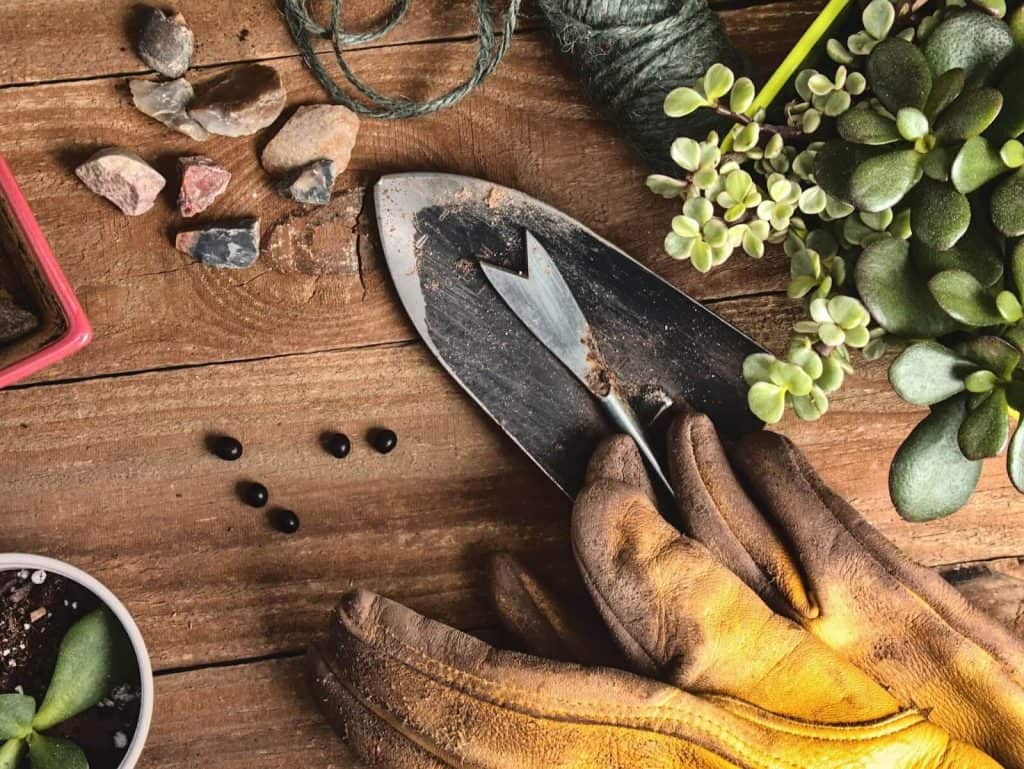
In that regard, aside from taking note of depth when potting your String of Pearls, you’ll also want to take note of these few other factors:
a. Soil Mix — String of Pearls grow best in a sandy, porous mix which allows the roots to breathe. You can experiment with a mix of garden soil, sand, and Perlite. The Perlite will help with extra drainage.
b. Size of Pot — When you pot the soil, you should also ensure that the size of the pot is not too big. If a pot is too big, the plant cannot take up water as quickly and the soil will stay wet for extended periods, promoting root rot. The string of Pearls plants also has relatively shallow roots, with a small root system, so the pot should not be too deep.
c. Type of Pot — Terracotta and ceramic pots are the best type of pots to grow your pearl string plant in. These materials are durable and breathable while ensuring that there is drainage. If you opt for anything else due to aesthetic reasons, make sure these pots have at least one drainage hole to ensure that your plant doesn’t sit in damp soil.

How to Replant a String Of Pearls
You should avoid replanting a String of Pearls plant unless the roots are starting to come out from the drain holes, or if the ends of the plants look very healthy but the roots don’t seem to be doing well.
When replanting, we want to ensure we take care of the existing healthy root network and reduce the chance of root rot after the replanting.
Due to its small and shallow root network, replanting it requires extreme care.
Additionally, if the roots are beginning to show signs of damage, it means the plant is already fragile and the stem and leaves could detach from the leaves.
Uproot the plant by carefully removing the plant from the point and shaking the plant gently to remove excess soil. Be patient and gentle. Besides the roots being delicate, the thin and long stems may tangle and break easily if you try to detangle them.
After you have removed the excess soil, if you suspect root damage, study the roots to check for damaged and rotten parts.
Remove the rotten portions of the roots and allow the roots to dry slightly, before replanting it into a pot that is of a good size. When replanting, remember to also ensure that you do not plant it too deep into the pot and that you also do not cover the leaves and stem with soil.
How Much Sun Does a String of Pearls Need?
The String of Pearls thrive with access to lots of filtered and bright light to the top (crown) of the plant, not just at the ends of the stems.
But you also need to ensure that the String of Pearls plant doesn’t have too intense sunlight, in particular, the afternoon sun. Exposing it to direct, intense sunlight is going to cause your String of Pearls to burn and turn brown.
You could put your plant on your balcony to provide it with bright light in the mornings when the light is gentler and bring your plant in when the afternoon light hits.
Should I Grow My String Of Pearls Indoors or Outdoors?
Given that it shouldn’t be under direct sunlight for extended periods, it would be better to keep your String of Pearls plant indoors with you, where the environment is controlled.
Keeping your String of Pearls outdoors exposes it to elements like the wind and pests. Stronger winds can be detrimental to a hanging plant, especially the String of Pearls which has thin stems that might tangle and break easily.
Outdoors, your String of Pearls might also be susceptible to overwatering due to the unpredictability of weather conditions.
If you live in a colder climate, String of Pearls would not be able to withstand frost.
To save you the hassle of having to bring your plant in when the weather becomes too chilly, windy, or rainy, you can keep it indoors from the get-go.
How to Propagate a String Of Pearls Plant?
Propagating a String of Pearls plant is not difficult.
Sometimes if your plant is dying, propagating it rather than repotting it might be best. The most common way of propagation is via stem cutting.
A String of Pearl plant can root from their stem so all you need to do is plant the stem cuttings on top of the soil to propagate it.
Study your plant to choose healthy sections of the plant to cut, to better increase your chances of successful propagation. Making multiple cuttings also increases your chances of your new plant taking root.
After cutting sections of your String of Pearls plant, allow the cuttings to dry a little before propagation to decrease the chance of root rot.
You have the option of planting the ends of your cuttings in moist soil or just laying the cuttings in a spiral on top of the soil, pinning down the stems to the soil with gardening pins or paper clips.
Make sure you do not bury your new cuttings to avoid giving them an overly damp environment.
If all conditions are optimal, sit back and it should root in about two weeks!
How Often Should You Water a String Of Pearls?

You should only water your String of Pearls when the soil is completely dry.
It is difficult to determine an exact frequency on when you should water your String of Pearls, and when this might be as it is dependent on several factors. The amount of sunlight it receives, whether the place is windy and whether it gets enough ventilation for the water to dry out.
The more amount of light your plant receives, the more water it will require. If it is in a spot that doesn’t get as much light, then reduce the amount of water it gets.
If in doubt, it is best to underwater String of Pearls because it is easier to rehydrate the plant by watering it than to revive an overwatered plant.
Whenever it is time to water the plant, ensure that you soak the soil at each watering. But try not to put the water in all at one go – do so in small spurts, ensuring that the soil has time to take up the water.
Try to also water your plants in the morning so you allow them to settle the rest of the day to dry out and that it doesn’t sit in overly-damp soil in the cool night air.
Best Pots for a String Of Pearls
Terracotta and ceramic pots are best for String of Pearls as they absorb moisture. Better still if they come with drainage holes.
- This Mkono Ceramic Hanging Planter is minimalist and simple. It also comes with a drill hole to prevent water accumulation, reducing the chances of root rot.
- If you want to brighten up your living space, MyGift’s 4-Pot Bright Pastel Ceramic Hanging Flower Planter Set will lend some colour.
- If you prefer something smaller, My Urban Craft’s Dangling Succulent Pots with Jute Rope are compact yet sturdy and perfect for your String of Plants and any accompanying succulents. It also comes with a drainage hole at the bottom.
- Lastly, if you’re looking for something a little more unique, how about this AIMEBBY Face Flower Pot Head Planter Pot. This planter may be made of resin but it has drainage holes so you needn’t be too concerned with excess water and drainage.
Other Succulents to Consider Growing

If you enjoyed growing your String of Hearts and wanted to also grow other succulents that are similarly low-maintenance, you can consider these plants:
1. Donkey Tail
This trailing succulent with teardrop-shaped leaves is an eye-catcher with its bluish-green leaves.
2. Haworthia
These are known as the jewels of the succulent world, standing out with their unique markings.
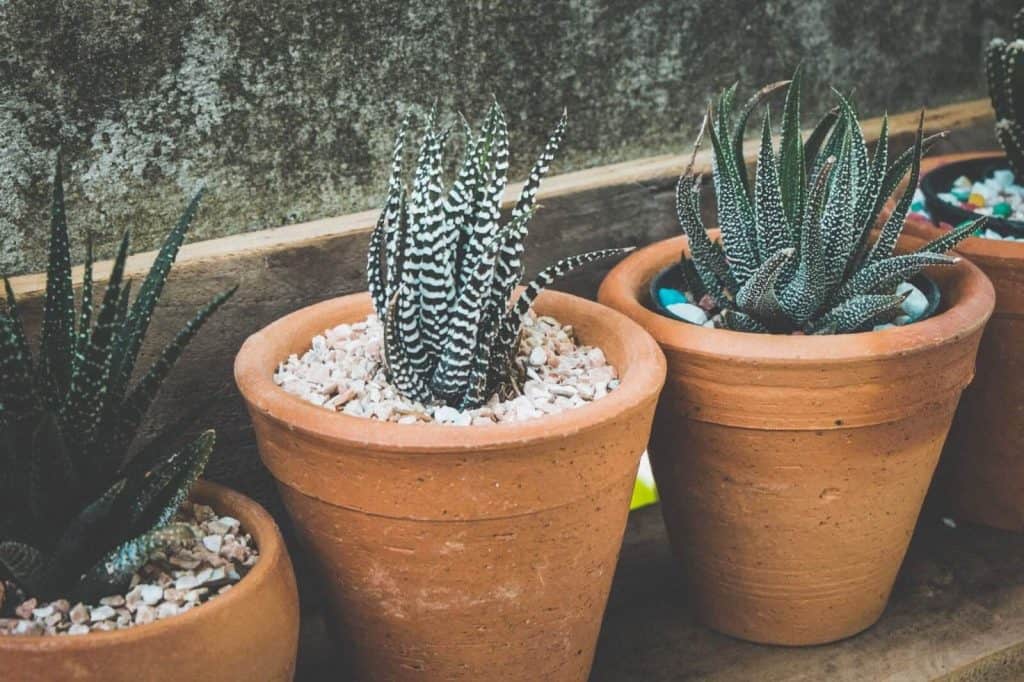
3. Echeveria
These succulents resemble flowers with their rosette-shaped plump leaves. These plants also come in a variety of colours, adding to their popularity.
Conclusion
Growing a String of Pearls plant is generally straightforward, undemanding, and can be very rewarding when you see the plump beads flourishing and cascading down your hanging planters.
The next time you wonder why is my string of pearls dying and catch yourself doubting your plant-growing abilities, take a pause and evaluate the situation.
Chances are, your dying String of Pearls is little cause for panic and it is simply a case of adjusting your watering habits, switching up the location of the plant, or replanting it in a suitable pot.
If all else fails, remember that it is not at all difficult to propagate a String of Pearls plant. Given how quickly these plants grow, you’ll be able to try again in a matter of weeks.





![Philodendron Brasil – Top 7 Simple Care Tips [2022 Guide]](https://aboveandbeyondgardening.com/wp-content/uploads/2022/02/Philodendron-Brasil-768x512.jpg)
